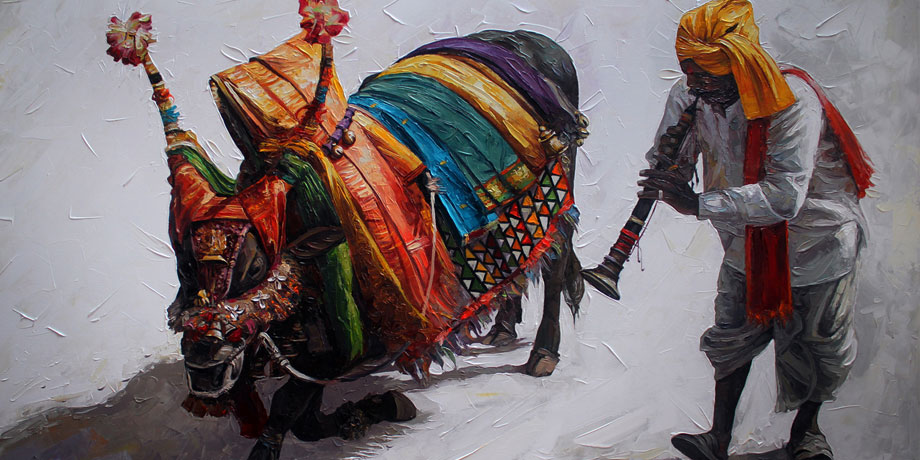
Indian art and culture has had a significant influence on the world throughout history. From ancient times, India has been known for its rich tradition of art and culture, which has been passed down through generations. The country's art, architecture, music, dance, and literature have all had a profound impact on the world.
The impact of colonialism on Indian art and culture
India, a land of diverse cultures and traditions, has a rich history of art and architecture dating back to ancient times. However, the country's artistic and cultural heritage was deeply affected by the arrival of European colonizers in the 18th and 19th centuries. The British Raj, which lasted from 1858 to 1947, had a significant impact on Indian art and culture, both positively and negatively.
One of the most significant impacts of colonialism on Indian art was the introduction of Western styles and techniques. British artists and architects, who were sent to India to document and preserve the country's heritage, brought with them the styles and techniques of the Renaissance and the Enlightenment. This led to a fusion of Indian and Western styles, known as the Indo-Saracenic or Indo-Gothic style, which can be seen in many buildings and monuments built during the colonial period, such as the Victoria Memorial in Kolkata and the Gateway of India in Mumbai.
Additionally, the British also established art schools and academies in India, which trained Indian artists in Western techniques and styles. This led to the emergence of a new generation of Indian artists who were heavily influenced by Western art. Many of these artists began to reject traditional Indian art forms in favor of more Western styles, which was a significant departure from the traditional Indian art forms.
On the other hand, colonialism also had a negative impact on Indian art and culture. The British viewed traditional Indian art as primitive and inferior, and they actively discouraged its practice. Many traditional art forms, such as Indian miniature painting and temple architecture, fell into decline as a result. Additionally, the British also destroyed or removed many ancient sculptures and artifacts, which were taken to Britain as trophies of their imperial conquests.
In terms of culture, colonialism had a profound impact on Indian society. The British introduced their own customs and traditions, which slowly began to replace traditional Indian customs and traditions. This led to the erosion of traditional Indian culture and the loss of many ancient customs and practices. Additionally, the British also imposed their own system of education and governance, which led to the suppression of Indian languages and the promotion of English as the language of education and government.
In conclusion, colonialism had a significant impact on Indian art and culture. While it did introduce new styles and techniques, it also led to the decline of traditional art forms and the erosion of traditional Indian culture. To preserve the rich heritage of Indian art and culture, it is important to acknowledge the impact of colonialism and to actively promote and preserve traditional Indian art forms.
The influence of Indian art and culture on the world
One of the most notable ways in which Indian art has influenced the world is through its architecture. The ancient Indian architectural style, known as the Indian subcontinent architectural style, is characterized by its use of intricate carvings and sculptures, as well as its ornate decoration. The style has been adopted by many countries around the world, including Indonesia, Cambodia, and Sri Lanka.
Indian music and dance also have a strong influence on the world. The country's classical music and dance styles, such as Bharatanatyam, Kathak, and Kathakali, have been adopted by many countries and are now performed in various parts of the world. Additionally, Indian folk music and dance styles, such as Bhangra and Garba, have also gained popularity around the world.
Indian literature, particularly the ancient epic poem "Ramayana" and "Mahabharata" have also had a significant impact on the world. These epic poems have been translated into many languages and are still widely read and studied today. Additionally, ancient Indian texts such as the "Bhagavad Gita" and "Upanishads" have also had a profound impact on the world's spiritual and philosophical beliefs.
Finally, Indian art and culture have also had a major impact on the world through the popularity of yoga and Ayurveda. These ancient Indian practices have gained worldwide popularity as a means of promoting physical and mental well-being.



Leave a Comment